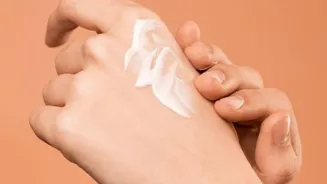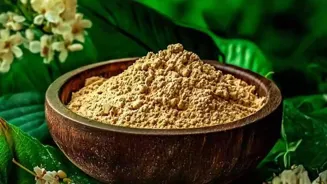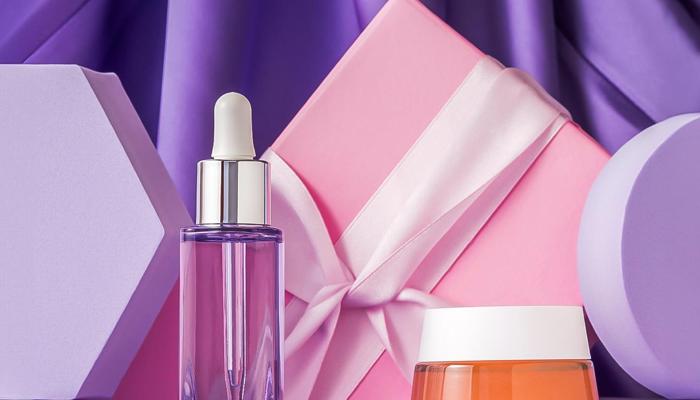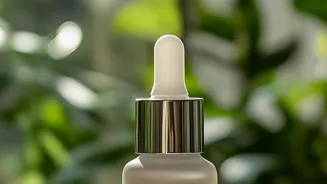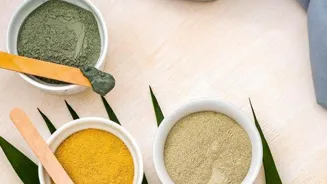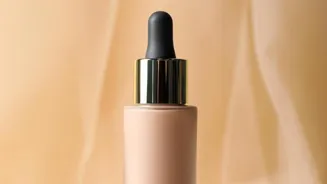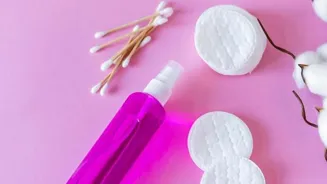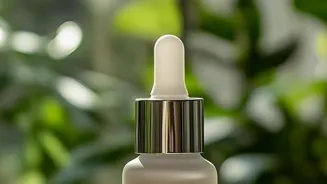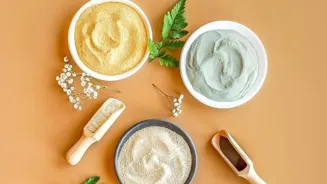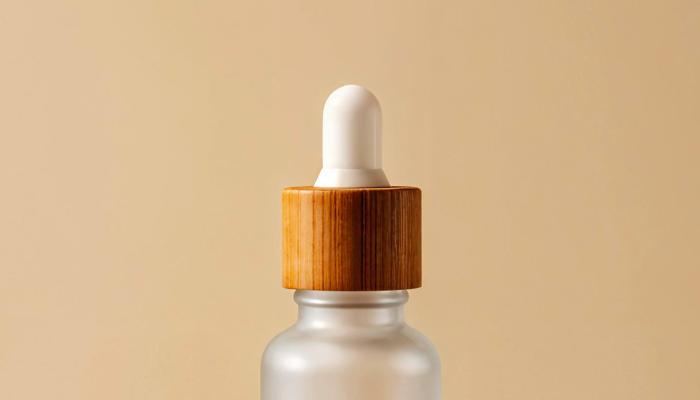Unlock the secrets of radiant skin with exfoliation. Dive into the world of skincare transformation now!
In the bustling streets of India, where dust and pollution are daily realities, maintaining healthy,
glowing skin can feel like a constant battle. But fret not, because the solution might be simpler than you think: exfoliation.
Yes, this simple skincare step can unlock a wealth of benefits, revealing a brighter, smoother, and more radiant you. So, let's dive deep into the world of exfoliation and discover how it can transform your skin.
Exfoliation removes dead skin for fresh, glowing skin
Exfoliation, at its core, is the process of removing dead skin cells from the surface of your skin. Our skin naturally sheds these cells every 30 days or so, but sometimes this process isn't as efficient as it should be.
Dead skin cells can accumulate, leading to dullness, clogged pores, and even breakouts. By manually or chemically removing these dead cells, exfoliation reveals the fresh, new skin underneath, improving its texture and overall appearance. It's like hitting the reset button for your skin.
Choose between physical and chemical exfoliation based on skin type
There are two main types of exfoliation to choose from: physical and chemical. Physical exfoliation involves using tools or scrubs to manually buff away the dead skin cells. This includes things like scrubs with granules (sugar, salt, or beads), dry brushes, and exfoliating sponges or cloths.
On the other hand, chemical exfoliation uses acids like AHAs (alpha-hydroxy acids) and BHAs (beta-hydroxy acids) to dissolve the bonds holding dead skin cells together, allowing them to be easily swept away.
Both methods have their pros and cons, and the best choice for you depends on your skin type and sensitivity.
Exfoliate wisely for healthy skin: 2-3 times a week, adjust for sensitivity
Now, the question is, how often should you exfoliate? This is a crucial point, as over-exfoliation can do more harm than good. For most skin types, exfoliating 2-3 times a week is a good starting point.
However, if you have sensitive skin, you might want to start with just once a week and gradually increase the frequency as your skin gets used to it. Pay close attention to how your skin feels after each exfoliation. If you experience redness, irritation, or dryness, reduce the frequency.
Remember, consistency is key, but listening to your skin's needs is even more important.
Explore wonders of physical exfoliation, from scrubs to dry brushing for glowing skin
Let's explore the wonders of physical exfoliation. Think of it as a gentle massage for your skin, buffing away dead cells and leaving you with a visible glow. Scrubs, with their grainy texture, are a popular choice.
Opt for gentle scrubs with small, rounded particles to avoid micro-tears on your skin. Dry brushing, another option, involves using a natural-bristle brush on dry skin to stimulate circulation and lymphatic drainage. It's a great way to invigorate your skin and reduce the appearance of cellulite.
And then you have exfoliating sponges and cloths, which provide a more gentle form of physical exfoliation, perfect for sensitive skin.
Chemical exfoliants dissolve dead skin cells for smoother skin
Moving on to chemical exfoliation. These powerful potions work their magic by dissolving the glue that holds dead skin cells together. AHAs, like glycolic acid and lactic acid, are water-soluble and work on the surface of the skin.
They're great for addressing uneven skin tone, fine lines, and rough texture. BHAs, like salicylic acid, are oil-soluble and can penetrate deep into pores, making them ideal for treating acne and blackheads.
Chemical exfoliants might sound intimidating, but they can be incredibly effective when used correctly. Start with a low concentration and gradually increase it as your skin tolerates it.
Exfoliation enhances skincare benefits for radiant, even-toned, youthful skin
Exfoliation isn't just about shedding dead skin cells; it's about unlocking a multitude of benefits for your skin. By removing the barrier of dead cells, it allows your skincare products to penetrate deeper and work more effectively.
This means your serums, moisturizers, and treatments can deliver their ingredients where they're needed most. Exfoliation also helps to even out skin tone, reduce the appearance of acne scars and hyperpigmentation, and promote collagen production, leading to firmer, more youthful-looking skin.
It's a true multi-tasker.
Consider this wisdom
Regular exfoliation can help reduce the appearance of pores, making them look smaller and less noticeable. When pores are clogged with dead skin cells and sebum, they tend to appear larger. By keeping them clear, exfoliation minimizes their visibility.
Exfoliation also stimulates blood flow, which brings oxygen and nutrients to the skin cells, promoting a healthy, radiant complexion. It's like giving your skin a mini-workout. The increased circulation can also help to reduce puffiness and promote lymphatic drainage.
Post-exfoliation, hydrate with rich moisturizer and sunscreen
Following exfoliation, it is essential to replenish the lost moisture. The newly revealed skin is more vulnerable to dryness and irritation, so it's crucial to hydrate it properly. Apply a rich moisturizer or a hydrating serum immediately after exfoliating to lock in moisture and soothe the skin.
Look for ingredients like hyaluronic acid, ceramides, and glycerin, which are known for their moisturizing properties. Always remember to apply sunscreen after exfoliation, as the fresh skin is more susceptible to sun damage.
Choose exfoliation based on skin type for best results
Let us not forget considering your skin type. Picking the right exfoliation method and frequency is crucial for achieving optimal results without causing irritation.
If you have oily or acne-prone skin, chemical exfoliation with BHAs might be the best choice, as it can help unclog pores and control oil production. For dry skin, gentle physical exfoliation or AHAs can help remove dead skin cells and improve hydration.
If you have sensitive skin, opt for gentle physical exfoliation with a soft cloth or a very mild chemical exfoliant, and always do a patch test before applying it to your entire face.
Understand your skin type for proper exfoliation routine
Take the time to learn about your skin type and its specific needs, and choose exfoliation methods and products accordingly. Consulting a dermatologist or skincare professional can also be beneficial, especially if you have any underlying skin conditions or concerns.
They can assess your skin and recommend the most appropriate exfoliation routine for you. With the right guidance, you can unlock the transformative power of exfoliation and achieve healthy, glowing skin. Exfoliation is not a one-size-fits-all treatment.
Complete skincare routine includes exfoliation for best results
Also remember, a complete skincare routine goes beyond simple exfoliation. This simple step will yield amazing results. Cleansing, toning, moisturizing, and sun protection are all essential components of a healthy skincare regimen.
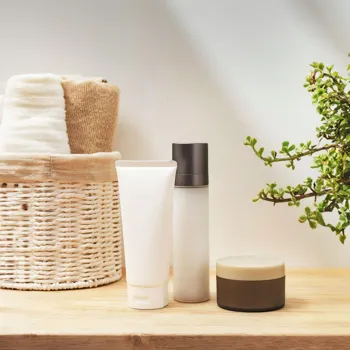
Incorporate exfoliation into your existing routine to enhance its effectiveness and achieve even better results. Don't be afraid to experiment with different methods and products until you find what works best for your skin. It's a journey of self-discovery, and your skin will thank you for it.
Finally, here's a pro-tip
Consider exfoliating your body as well. Don't just focus on your face. The skin on your body can also benefit from exfoliation, especially in areas like the elbows, knees, and feet, which tend to be drier and rougher. Use a body scrub or a loofah to gently exfoliate your body 2-3 times a week.

This will help to remove dead skin cells, improve circulation, and leave your skin feeling smooth and refreshed. So, embrace the wonders of exfoliation, not just for your face but for your entire body, and reveal your most radiant self.
AI Generated Content. Glance/InMobi shall have no liability for the content